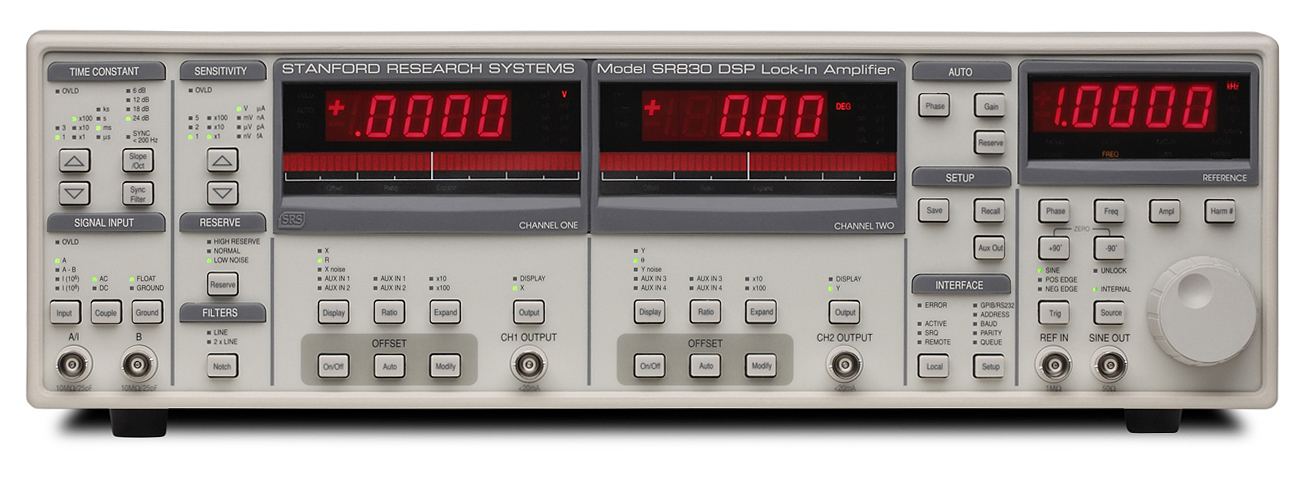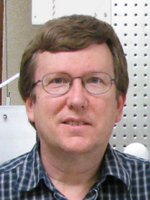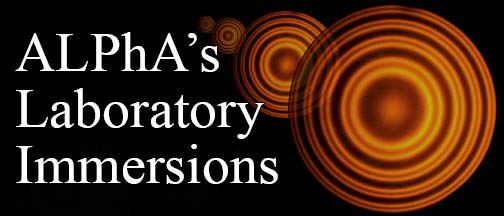- Home
- What We Do
- Laboratory Immersions
- Immersions 2018
- Imm2018Caltech_SSDLockIn
Small Signal Detection with a Lock-In Amplifier
California Institute of Technology, June 20-22, 2018
(One set-up for four participants)
Much of modern experimental physics involves pulling a small signal out of a forest of noise. The most common technique for this—and probably the most accessible to the undergraduate student—is phase-sensitive detection. While the implementation of this technique has evolved considerably since its invention by Bob Dicke in the 1940’s, the underlying principle remains the same. In this lab, participants will use a modern, DSP lock-in amplifier to learn both the underlying principles and practical applications of the method.

This workshop will cover the essentials of lock-in detection, along with fundamental and technical noise sources that limit the resolution of measurements. Participants will generate a small signal and use a lock-in to measure it, and they will measure amplifier noise and Johnson noise in the apparatus under a variety of conditions. This will set the foundation for understanding signal-to-noise ratio and its fundamental limits.
We will then send a pulsed laser beam to a distant mirror and reflect it back to a local detector, using the lock-in to measure the phase lag between the outgoing and returning beam, and thus measuring the speed of light in a laboratory setting.
Participants need only bring a lab notebook and a pen. All hardware and reading material will be provided. There is some minimal data analysis, so a favorite scientific calculator or laptop would be an optional convenience.
Hosts and Mentors
Dr. Eric D. Black, California Institute of Technology, Department of Physics, MC 264-33 Pasadena, CA 91125. Email: blacke@its.caltech.edu. Telephone: 626-395-3858.
 Kenneth G. Libbrecht (B.S., Caltech; Ph.D. Princeton) is professor of physics at the California Institute of Technology where he is involved in the Laser Interferometer Gravitational Wave Observatory (LIGO), the growth of crystals, notably snow crystals, and physics education. He has helped turn a number of Caltech's new experiments for the teaching labs into commercial products, which may be seen at http://newtonianlabs.com and in this Immersion.
Kenneth G. Libbrecht (B.S., Caltech; Ph.D. Princeton) is professor of physics at the California Institute of Technology where he is involved in the Laser Interferometer Gravitational Wave Observatory (LIGO), the growth of crystals, notably snow crystals, and physics education. He has helped turn a number of Caltech's new experiments for the teaching labs into commercial products, which may be seen at http://newtonianlabs.com and in this Immersion.
Kenneth G. Libbrecht, Professor of Physics, California Institute of Technology, Department of Physics, MC 264-33 Pasadena, CA 91125. Email: kgl@caltech.edu. Telephone: 626-395-3722.
Please note that the Jonathan F. Reichert Foundation has established a grant program to help purchase apparatus used in Laboratory Immersions. Limitations and exclusions apply, but generally speaking the foundation may support up to 40% of the cost of the required equipment.






